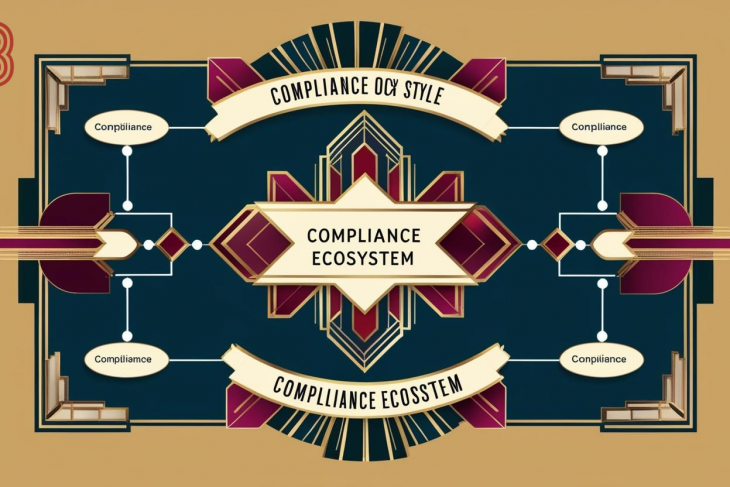
Introduction
In the realm of cybersecurity, one of the most significant threats to an organization lies within its own walls: privileged access. Privileged Access Management (PAM) is a critical component of modern cybersecurity strategies. It encompasses the policies, processes, and technologies used to control, monitor, and secure privileged accounts within an organization’s IT infrastructure. These privileged accounts, which include system administrators, database administrators, and other high-level users, hold the keys to sensitive systems and data. Without proper management, these accounts become prime targets for malicious insiders and external attackers alike.
The Importance of Privileged Access Management
1. Elevated Risk of Privileged Accounts
Privileged accounts have elevated access rights that allow users to bypass security protocols, change system configurations, access sensitive data, and install software. If compromised, these accounts can be exploited to inflict significant damage, ranging m data theft and fraud to system disruption and sabotage.
According to several cybersecurity reports, a large percentage of data breaches involve the misuse of privileged credentials. This has prompted organizations to adopt stricter access control mechanisms to minimize the attack surface and mitigate potential threats.2. Compliance Requirements
Various regulations and standards require stringent access control measures, especially for privileged access. These include:
General Data Protection Regulation (GDPR)
Health Insurance Portability and Accountability Act (HIPAA)
Payment Card Industry Data Security Standard (PCI DSS)
Sarbanes-Oxley Act (SOX)
Failure to comply with these regulations can result in heavy fines and reputational damage. PAM helps organizations meet these regulatory requirements by ensuring that access to critical systems and data is strictly controlled and auditable.
3. Insider Threats
Not all threats come from external actors. Disgruntled employees, contractors, or even careless users can cause significant harm if they possess privileged access. PAM ps mitigate insider threats by enforcing least privilege policies, monitoring activities, and quickly revoking access when necessary.
Core Components of PAM1. Least Privilege Access
The principle of least privilege dictates that users should only have the minimum level of access necessary to perform their job functions. PAM enforces this by limiting privileged access and segregating duties among different users to reduce risk.
2. Credential Vaulting
PAM solutions use secure vaults to store and manage privileged credentials. These vaults are encrypted and access is strictly controlled. Automatic password rotation and complex password enforcement help prevent credential theft and misuse.
3. Session Management and Monitoring
PAM tools often include session monitoring capabilities that allow organizations to record, observe, and audit privileged sessions. This provides real-time visibility into user activity and helps in forensic investigations.
4. Just-in-Time (JIT)
Access JIT access provides temporary, time-bound access to privileged accounts. Access is granted only when needed and revoked automatically afterward, reducing the window of opportunity for potential misuse.
5. Multi-Factor Authentication (MFA)
Adding an additional layer of security, MFA requires users to verify their identity through multiple methods (e.g., password and biometric verification) before gaining access to privileged accounts.
6. Privileged Elevation and Delegation Management (PEDM)
PEDM allows standard users to perform specific administrative tasks without being given full administrative privileges. This minimizes the risk while enabling operational efficiency.
Types of Privileged Accounts
Understanding the different types of privileged accounts is crucial for effective PAM implementation:
Administrator Accounts: Full control over operating systems and applications.
Service Accounts: Used by applications and services to interact with the operating system.
Application Accounts: Allow software programs to access databases or other applications.
Domain Administrator Accounts: High-level control across an entire domain, often in Active Directory environments.
Root Accounts: Unix/Linux equivalents of administrator accounts with unrestricted access.
Emergency Accounts (Break-Glass Accounts): Used during emergencies when regular access methods fail.
Each of these account types poses unique risks and requires tailored management strategies.
PAM Implementation Strategies
1. Inventory and Classification
Start by identifying all privileged accounts across the organization. Classify them based on risk level, usage frequency, and system sensitivity.
2. Define Policies and Governance
Establish clear policies regarding who can access what, when, and under what conditions. Define roles and responsibilities to ensure accountability.
3. Deploy a PAM Solution
Choose a PAM solution that aligns with organizational needs. Leading vendors include CyberArk, BeyondTrust, Thycotic, and Microsoft. The solution should support credential vaulting, session monitoring, MFA, and more.
4. Enforce Least Privilege
Implement role-based access controls (RBAC) and least privilege principles. Remove unnecessary access rights and periodically review permissions.
5. Monitor and Audit
Set up continuous monitoring and regular audits of privileged activity. Use logging and alerting systems to detect suspicious behavior in real time.
6. Train and Educate
Educate employees about the importance of PAM and secure access practices. Awareness training helps reduce human errors and improves overall security posture.
Challenges in PAM Implementation
1. Complexity and Scalability
Large organizations with sprawling IT environments face challenges in managing thousands of privileged accounts across on-premises, cloud, and hybrid infrastructures. Scalability and interoperability with existing systems are major concerns.
2. Resistance to Change
IT staff may resist PAM implementation due to perceived limitations on their workflow. It’s crucial to communicate the benefits and provide adequate training to ensure smooth adoption.
3. Shadow IT and Unknown Accounts
Untracked or unauthorized privileged accounts (often part of shadow IT) pose hidden risks. Discovering and securing these accounts is a continuous effort.
4. Integration with Legacy Systems
Older systems may lack support for modern PAM tools, requiring custom integrations or manual controls that can be error-prone and less secure.
5. Balancing Security with Usability
Overly restrictive access controls can hinder productivity. The challenge is to strike a ce between strong security and operational efficiency.
PAM in Cloud and Hybrid Environments
As organizations increasingly migrate to the cloud, PAM strategies must evolve. Cloud environments introduce new types of privileged access, such as:
Cloud Admin Accounts: Provided by cloud service providers (e.g., AWS, Azure).
API Keys and Tokens: Used for automated processes and services.
Cloud-native PAM solutions offer scalability, automation, and seamless integration with cloud platforms. Features like federated identity management and cloud access governance are becoming essential.
In hybrid environments, a unified PAM strategy is required to manage access across both on-premises and cloud systems. Centralized control and visibility are key to maintaining security and compliance.
The Role of Artificial Intelligence in PAM
Artificial Intelligence (AI) and Machine Learning (ML) are enhancing PAM capabilities in various ways:
Behavioral Analytics: AI can detect anomalies in user behavior, such as unusual login times or access patterns, and flag them for review.
Automated Risk Scoring: ML models can assign risk scores to privileged sessions based on contextual factors like location, device, and access time.
Threat Response Automation: AI can initiate automated responses to potential threats, such as revoking access or alerting security teams.
These innovations help organizations proactively defend against sophisticated threats while reducing the burden on security teams.
Case Studies and Real-World Examples1. Target Data Breach (2013)
Attackers gained access to Target’s network through stolen credentials from a third-party HVAC vendor. Once inside, they escalated privileges and accessed payment systems. Proper PAM controls, including third-party access governance, could have prevented or limited the breach.
2. Snowden Leaks (2013)
Edward Snowden, a contractor with privileged access, exfiltrated massive amounts of classified data. The lack of access monitoring and least privilege enforcement highlighted the need for robust PAM in government s.
3. Uber Data Breach (2016)
Hackers accessed Uber’s GitHub repository, found AWS credentials, and gained access to sensitive user data. Proper credential management and PAM could have secured the exposed keys.
These examples underline the catastrophic consequences of weak privileged access controls.
Benefits of Effective PAM
Enhanced Security: Reduces the attack surface by tightly controlling access to critical systems.
Improved Compliance: Ensures adherence to regulatory requirements through robust access controls and audit trails.
Operational Efficiency: Automates password management and access provisioning.
Risk Mitigation: Detects and responds to suspicious behavior quickly.
Centralized Control: Provides unified visibility across diverse IT environments.
Future Trends in PAM1. Zero Trust Architecture
Zero Trust assumes that no user or system is inherently trusted. PAM ll play a central role in enforcing Zero Trust principles by verifying every access request continuously and contextually.
2. Identity-Centric Security
The focus is shifting from devices and networks to identities. PAM will integrate more deeply with Identity and Access Management (IAM) to create a holistic security ecosystem.
3. Passwordless Authentication
Emerging technologies like biometrics, hardware tokens, and passkeys are paving the way for passwordless authentication. PAM systems will adapt to support these methods.
4. Cloud-native PAM
Cloud-first organizations need PAM solutions built specifically for cloud environments. These tools offer scalability, agility, and integration with DevOps and CI/CD pipelines.
5. PAM-as-a-Service
Subscription-based PAM services are gaining popularity, especially among small and medium-sized enterprises (SMEs). These solutions offer lower upfront costs and ease of deployment.
Summary
Privileged Access Management is a cornerstone of modern cybersecurity. In a world where breaches can cost millions and reputational damage is irreversible, securing privileged accounts is no longer optional—it is essential. Organizations must adopt a comprehensive PAM strategy that combines strong policies, cutting-edge technologies, and continuous monitoring. From on-premises data centers to cloud platforms and remote workforces, PAM ensures that the most sensitive assets remain protected.
As threats evolve and IT environments grow more complex, PAM will continue to adapt, incorporating AI, automation, and identity-centric approaches to stay ahead of malicious actors. Investing in PAM is investing in the resilience, compliance, and security of an organization’s digital future.




















